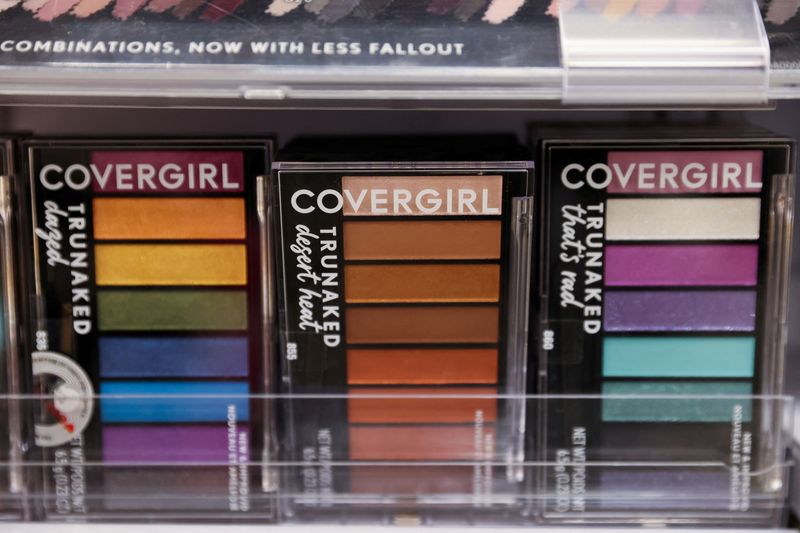By Alexander Marrow and Dominique Patton
LONDON/PARIS (Reuters) -Ageing brands and declining sales could make Coty’s makeup business a hard sell, raising the prospect of piecemeal deals or lower than expected proceeds that might complicate the group’s plans to cut debt and invest in growth.
Coty said on Tuesday it had launched a review of its mass-market Consumer Beauty business, a prelude to a possible sale or spinoff of some brands in a bid to cut debt, reverse shrinking cash flow, and focus on more profitable fragrances.
The business, home to the CoverGirl and Rimmel brands, generates around $1.2 billion in annual revenues, but has been losing market share to competitors with faster innovation cycles and more accessible price points.
WHO COULD BUY COTY’S CONSUMER BEAUTY BRANDS?
“It’s hard for these brands because they don’t look new to today’s consumers. And newness is important, especially in colour cosmetics,” said Morningstar analyst Dan Su.
Barclays analysts described the division as a “tough asset to sell”. They said it could be worth anywhere between $690 million and $950 million.
Buyers this year have shown strong interest in smaller, fast-growing brands like Hailey Bieber’s makeup and skincare line Rhode, snapped up by retailer Elf Beauty for $1 billion, and the vitamin A-based skincare business Medik8 bought by L’Oreal for an estimated $1 billion.
Buyout firms could look at the division, much as private equity house KKR bought a majority stake in Coty’s professional and retail haircare business, Wella, in 2020.
“I expect piecemeal deals rather than a one-shot sale,” Michael Ashley Schulman, partner and CIO at Running Point Capital Advisors, naming private equity firms Permira and L Catterton among possible suitors.
Coty said it did not comment on speculation. L Catterton declined to comment. Permira did not immediately respond to a request for comment.
Coty’s Consumer Beauty business reported an 8% drop in sales in the year ended June 30. Morningstar analysts expect another high-single-digit percentage decline this financial year, as it struggles to compete with social media influencers launching their own brands and selling on fast-growing online channels.
Coty’s in-house manufacturing has made it slower to innovate when compared to firms like Elf that use third-party producers, resulting in market share that is slipping over time, said Bank of America analyst Anna Lizzul.
“It’s a melting iceberg situation,” she said.
COTY CAME LATE TO SHIFTING FRAGRANCE TRENDS

